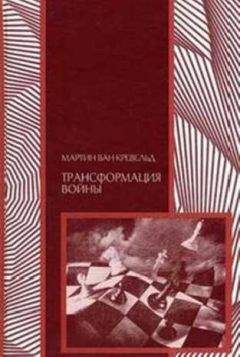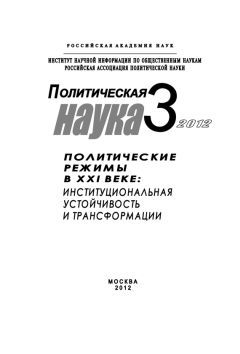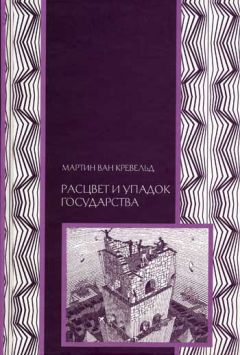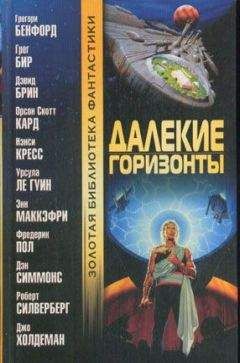216
Для устрашения остальных (франц.). ― Прим.пер.
Исследование дворянства (франц.). ― Прим. пер.
J.M. Font у Ruis, "The Institutions of the Crown of Aragon in the First Half of the Fifteenth Century," in R. Highfield, ed. Spain in the Fifteenth Century, 1369-1516 (New York: Harper, 1972), pp. 171-192.
Об этих событиях см.: T.N. Bisson, The Medieval Crown of Aragon (Oxford: Clarendon Press, 1986), p. 133-161.
Elliott, Imperial Spain, p. 1 lOff.; L. Fernandez Suarez, "The Kingdom of Castile in the Fifteenth Century," in Highfield, Spain in the Fifteenth Century, p. 95ff.
См.: J.R.L. Highfield, "The Catholic Kings and the Titled Nobility of Castile" in Hale, et.al., Europe in the Later Middle Ages, p. 358 ― 387.
H. Kamen, Spain 14 69 ― 1714: A Society ofConflict (London: Longman, 1983), p. 20, 155. Даже большие цифры приводит BaUB3:J.V. Vives, "The Economy of Spain During Ferdinand and Isabella's Reign," in Highfield "Spain in the Fifteenth Century", p. 253―254.
J. Lynch, Spain Under the Habsburgs (New York: New York University Press, 1981), vol. I, p. 210-217.
Elliott, Imperial Spain, p. 279ff.
Правосудие (лат.). ― Прим. научн. ред.
Об этих конституционных постановлениях см.: R.B. Merriman, The Rise ofthe Spanish Empire (NewYork: Cooper, 1962),vol. IV,p. 595― 599.
Т.A. Brady, Turning Swiss: Cities and Empire, 1450 ― 1550 (Cambridge: Cambridge University Press, 1985).
Цит. по: К.Н. Roth von Schrekenstein, Das Patriziat in den deuschen Stadten (Tubingen: Laupp, 1856), s. 552.
Cm.:F.L. Carsten, Princes and Parliaments in Gei"many (Oxford: Clarendon Press, 1959), p. 357ff.
Carsten, A History of the Prussian Junkers (Aldershot: Scholar Press, 1989), p. 7-16.
См. краткий обзор развития Германии в: V.G. Kierman, State and Society in Europe, 1550 ― 1650 (New York: St. Martin's, 1980), ch. 9.
Отличия (франц.). ― Прим. научн. ред.
Обсуждение французских marques de noblesse см., в частности: Е. Schalk, From Valor to Pedigree: Ideas of Nobility in France in the Sixteenth and Seventeenth Centuries (Princeton: Princeton University Press, 1986), ch. 7.
F.R. Bairoch, etal., eds. La population des villes europeennes (Geneva: Droz, 1988), p. 253-254.
Недавний обзор средневековых городских институтов см. в: S. Reynolds, Kingdoms and Communities in Western Europe, 900 ― 1300 (Oxford: Clarendon Press, 1984), ch. 6.
С.R. Young, The English Borough and Royal Administration, 1130― 1307 (Durham, NC: Duke University Press, 1961), p. 16, 155-161.
S. Reynolds, An Introduction to the History of English Medieval Towns (Oxford: Clarendon Press, 1977), p. 109-110.
С 1500 no 1700 г. не менее 160 английских поселений впервые получили городской статус: P. Clark and P. Slack, English Towns in Transition 1500-1700 (New York: Oxford University Press, 1976), p. 128.
L. Stone, The Causes of the English Revolution, 1529 ― 1642 (London: Routledge, 1972), p. 9Iff.
Об особенностях итальянских городов в этот период см.: G. Chittolini, "Cities, 'City-States', and Regional States in North-Central Italy," in C. Tilly and W.P. Blockmans, eds., Cities and the Rise of States in Europe, AD 1000 to 1800 (Boulder: Westview Press, 1989),p. 28-44.
F. Bocchi, "Cittaecampagnanell'Italiacentrosettentrionale" (sec. XII― XIV), Storia delta Citta, 10, 1986, p. 101-104; M. Berengo "Citta e contado in Italia dal XV al XVII secolo", Storia delta Citta, 10, 1986, p. 107-111.
Заново (лат.). ― Прим. пер.
См.: Н. Stoob, Forschungen гит Stadtiuesen inEuropa (Cologne: Boehlau, 1979), vol. I.
О судьбе северных городов Германии см.: F.L. Carsten, The Origins of Prussia (Oxford: Clarendon, 1954), p. 109ff.
В 1500 г. самый большой город Германии, Аугсбург, насчитывал 50000 жителей против более 100 000 в Венеции и Милане. Некоторые цифры см. в: Е. Ennen, The Medieval Town (Amsterdam: North Holland Publishing, 1979), p. 187-189.
О попытках реанимировать Ганзу и об ее окончательном упадке см.: P. Dollinger, The German Hansa (London: Macmillan, 1964), pt. III.
H. Patze and G. Streich "Die landesherrlichen Residenzen im spStmittelalterlichen Deutschen Reich," Blatter fur Deutsche Landesgeschichte, 118, 1982, p. 202-220.
Добрых городов (франц."). ― Прим. пер.
См. общий обзорв: В. Chevalier, Les bonnes villes de France du XVe аи XVIe siecle (Paris: Aubier Montaigne, 1982).
R. Fedou, "A Popular Revolt in Lyons in the Fifteenth Century: The Rebeyne of 1436" in P.S. Lewis, ed., The Recovery of France in the Fifteenth Century (NewYork: Harper, 1971), p. 242-264.
В. Chevalier, "The Policy of Louis XI Toward the Bonnes Villes: TheCase of Tours," in Lewis, Recovery of France, p. 265―293.
Bruisseret, Henry TV, p. 164―166.
Историю того, как французские города потеряли независимость, см. в: R.A. Schneider, "Crown and Capitoulat: Municipal Government in Toulouse, 1500―1789," inR. Benedict, ed., Cities and Social Change in Early Modern France (London: Unwin Hyman, 1989), ch. 6.
См. об отношениях между короной и городами в этот период: P. Fernandez Albaladej о, " Cities and the State in Spain," in Tilly and Blockmans, Cities and the Rise of States in Europe, p. 170―173.
Об истории движения комунерос см.: S. Haliczer, The Communeros of Castile: The Forming of a Revolution, 1475―1521 (Madison: University of Wisconsin Press, 1981); A.W. Lovett, Early HabsburgSpain, 1517-1598 (Oxford: Oxford University Press, 1986), p. 30ff.
Общность, сообщество, корпорация (исп.). ― Прим. научн. ред.
См. Данные в: R. Trevor Davies, The Golden Century of Spain (London: Macmillan, 1961), p. 180ff.
J.H. Elton, "The Decline of Spain, "Past and Present," 20, 1961,p. 6 Iff; A.D. Ortiz, The Golden Century of Spain (London: Weidenfeld and Nicolson, 1971), p. 184ff.
Цифры см. в: Fernandez Albaledejo, "Cities and the State in Spain," p. 177, таблица 8.1.
О достижениях швейцарцев см. M.V. Clarke, The Medieval City-State (Cambridge: Speculum, 1966 edn.), ch. 7.
«Искусство войны» (итал.). ―Прим. пер.
Н. Pirenne, "The Formation and Constitution of the Burgundian State," American Historical Review, 14, 1909, p. 477―502.
О политической системе Нидерландов см.: С. Wilson, The Dutch Republic (London: Weidenfeld and Nicolson, 1968), ch. 3; M. 'T Hart "Intercity Rivalries and the Making of the Dutch State," in Tilly and Blockmans, Cities and the Rise ofStates in Europe, p. 199―203; а также более развернуто в: 'THart, The Making of Bourgeois State: War, Politics and Finance During the Dutch Revolution (Manchester: Manchester University Press, 1993).
См.: М. van Creveld, Technology and War (New York: Free Press, 1989), p. 27-28, 106.
См.: J. Anderson and S. Hall, "Absolutism and Other Ancestors" in J. Anderson, ed., The Rise of the Modern State (Brighton: Wheatsheaf, 1986), p. 31.
См., напр.: D. Parker, The Making of French Absolutism (London: Edward Arnold, 1983), p. 66-67.
Истинный, настоящий (лат.). ― Прим. пер.
См.: М. Van Creveld, Command in War (Cambridge, MA: Harvard University Press, 1985), p. 52-55.
Erasmus, The Education of a Christian Prince, L.K. Born, ed. (New York: Norton, 1964), p. 208.
Король-солнце (франц.). ― Прим. пер.
Цит. по: Е. Le Roy Ladurie, The Royal French State 1460-1610 (Oxford: Blackwell, 1994), p. 156.
Хёйзинга Й. Осень средневековья. М.: Наука, 1988. С. 44―47.
Цит. по: Е. Lavisse, Louis XIV (Paris: Tallandier, 1978 [1905]), vol. VII, pt. I, p. 157.
См. анализ того, как были заложены эти дворцы, в: N. Elias, The Court Society (Oxford: Basil Blackwell, 1983), ch. 5.
Cm. A. Huon, "Le theme du prince dans les entrees parisiennes au XVe siecle," inj. Jacquot, ed. Les fetes de la Renaissance (Paris: Centre national de la recherche, 1956), vol. I, p. 21―30; R. Strong, ArtandPower: Renaissance Festivals 1450 ― 1650 (Woodbridge, Suffolk: Boydel, 1973) ― детальный анализ того, как абсолютистская тематика стала господствующей.
Живые картины (франц.) ― Прим. пер.
Театральный эффект (франц.). ― Прим. пер.
См.: С. Brown, VanDyck (Oxford: Phaedon, 1982), esp. ch. 4.
J. Pope-Hennessey, Italian Renaissance Sculpture (London: Phaedon, 1971), p. 52-59.
См. M. Bloch, The Royal Touch: Sacred Monarchy and Scrofula in England and France (London: Routledge, 1973) [Русск. пер.: Блок М. Короли-чудотворцы. М.: Языки русской культуры, 1988.]
F. Guicciardini, Ricordi (Milan: Rizzoli, 1951 edn.), series 2, 64.
См.: N. Rubinstein, "Notes on the Word Stato in Florence Before Machiavelli," inR.G. Rose and W.K. Ferguson, eds. Florilegium Historiale: Essays Presented to Wallace K. Ferguson (Toronto: University of Toronto Press, 1971), p. 313-326.
Эпическими поэмами (франц.). ― Прим. научн. ред.
Макиавелли Н. Государь. Гл. 25.
«Шесть книг о политике или о гражданской доктрине» (лат.). ― Прим. пер.
Memoires de Louis XP/t J. de Lognon, ed. (Paris: Tallandier, 1927), p. 280-281.
G. Oestreich, Neostoicism and the Origins of the Modern State (Cambridge: Cambridge University Press, 1982).




